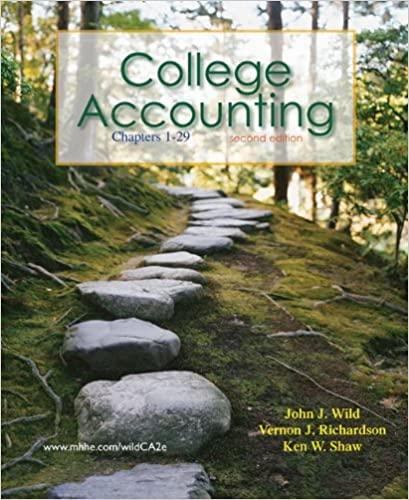(the balance sheet goes at the bottom of the page) Prepare the current and long-term liability sections of the December 31, 2016, balance sheet. Balance
| (the balance sheet goes at the bottom of the page) Prepare the current and long-term liability sections of the December 31, 2016, balance sheet.
The unadjusted trial balance of the Manufacturing Equitable at December 31, 2016, the end of its fiscal year, included the following account balances. Manufacturings 2016 financial statements were issued on April 1, 2017. | |||||||||||||||||||||||
| Accounts receivable | $ | 112,500 | |
| Accounts payable | 42,600 | ||
| Bank notes payable | 612,000 | ||
| Mortgage note payable | 1,390,000 | ||
| Other information: | |
| a. | The bank notes, issued August 1, 2016, are due on July 31, 2017, and pay interest at a rate of 10%, payable at maturity. |
| b. | The mortgage note is due on March 1, 2017. Interest at 9% has been paid up to December 31 (assume 9% is a realistic rate). Manufacturing intended at December 31, 2016, to refinance the note on its due date with a new 10-year mortgage note. In fact, on March 1, Manufacturing paid $430,000 in cash on the principal balance and refinanced the remaining $960,000. |
| c. | Included in the accounts receivable balance at December 31, 2016, were two subsidiary accounts that had been overpaid and had credit balances totaling $20,750. The accounts were of two major customers who were expected to order more merchandise from Manufacturing and apply the overpayments to those future purchases. |
| d. | On November 1, 2016, Manufacturing rented a portion of its factory to a tenant for $34,500 per year, payable in advance. The payment for the 12 months ended October 31, 2017, was received as required and was credited to rent revenue. |
| Required: |
| 1. | Prepare any necessary adjusting journal entries at December 31, 2016, pertaining to each item of other information (ad). (If no entry is required for a transaction/event, select "No journal entry required" in the first account field.) The bank notes, issued August 1, 2016, are due on July 31, 2017, and pay interest at a rate of 10%, payable at maturity.
2 The mortgage note is due on March 1, 2017. Interest at 9% has been paid up to December 31 (assume 9% is a realistic rate). Manufacturing intended at December 31, 2016, to refinance the note on its due date with a new 10-year mortgage note. In fact, on March 1, Manufacturing paid $430,000 in cash on the principal balance and refinanced the remaining $960,000.
3 Included in the accounts receivable balance at December 31, 2016, were two subsidiary accounts that had been overpaid and had credit balances totaling $20,750. The accounts were of two major customers who were expected to order more merchandise from Manufacturing and apply the overpayments to those future purchases.
4 On November 1, 2016, Manufacturing rented a portion of its factory to a tenant for $34,500 per year, payable in advance. The payment for the 12 months ended October 31, 2017, was received as required and was credited to rent revenue.
|
Step by Step Solution
There are 3 Steps involved in it
Step: 1

See step-by-step solutions with expert insights and AI powered tools for academic success
Step: 2

Step: 3

Ace Your Homework with AI
Get the answers you need in no time with our AI-driven, step-by-step assistance
Get Started


